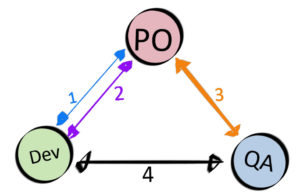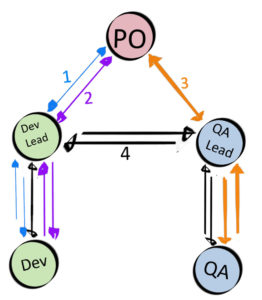Silos are something that graced this nation’s landscape for almost a century. Growing up as a farm kid, I could see them for miles in the flat county of north-central Iowa. For many farmers, silo’s where the only way to store a winters worth feed for animals housed on the farm. It was a way to keep the grain safe by making sure nothing would get in and damage it. One farmer by my hometown built a house out of a silo, complete with a fifth-floor penthouse that was used for the occasional square dance. Their importance has been memorialized by the National Park Service through the Silos and Smoke Stacks National Heritage Area.
Although silos have a critical heritage to the American farmer, they have a different type of heritage within businesses. They are used to protect the inhabitance of a group or department and control external interference. They often lead to slower decisions and missed communication. They can contribute to missed deadlines and slower response time to the customers. Most everyone understands the silos within a business are a problem, but many do not understand how silos can easily quadruple the number of conversation needed to address issues or to clarify a misunderstanding.
Let’s look at a simple situation within a software development team. Let’s assume that a developer with the team is working on a simple task that will be tested by a quality assurance (QA) testers. During the life cycle of this task, we notice the following communication. We can map this out in below.
- Before starting the task, the developer needs clarification from the Product owner
- During the task, the developer needs one more clarification from the product owner
- While setting up the test cases, the QA tester need a clarification from the Product Owner
- While testing, the QA tester need a clarification from the developer.
If we look at the diagram above, we will see that this simple situation results in 4 distinct conversations. Since we are assuming this is a simple task, we that don’t need multiple people to make a decision. (I’m defining a conversation as an exchange of information with a distinct start and end.) Assume everyone is available promptly, the time and effort required for the conversation are small compared to the task.
Now, let assume that the organization has chosen to silo the developer and QA testers into separation departments or organizations. Within this model, communication with the developer or QA tester needs to go through a test lead or QA lead. In this situation, we can map the conversations below.
As you can see, the number of conversations went from 4 to 14, almost a 4-fold increase in the number of conversations. (#4 alone required six distinct conversations). This example assumes that each conversation is a perfect conversation and all the important information is transferred correctly and completely. But we all know that this is not the case. Ask any kid that has played the game of telephone how quickly a simple phrase can morphe into something completely different. It is likely that at least one series of conversations will result in a misunderstanding and will need to have some clarifications. In reality, the clarifications would lead to a 5-fold+ increase in conversations.
To compound the problem, these series of communications can take several days if the developers and/or testers are in a different country then the leads. For instance, if leads on on-shore and the developers are off-shore, the difference in working hours can result in a multi-day turnaround for simple questions. In today’s fast-moving environment, can businesses afford this type of delay?
One of the twelve agile principles states that “simplicity – maximizing the amount of work not done- is essential”. Allowing silos to exist flies in the face of this agile principle. Removing silos within a workplace is a significant amount of work, but it can be done. Start out by mapping your conversations and trying to find one or two small changes that can reduce the number. Over time, you to can break down the silos and spend more time doing valuable work.
What have you done to tear down a silo in your organization?
Cover image courtesy of https://www.publicdomainpictures.net/en/view-image.php?image=232605&picture=barn-tractor-and-silo


